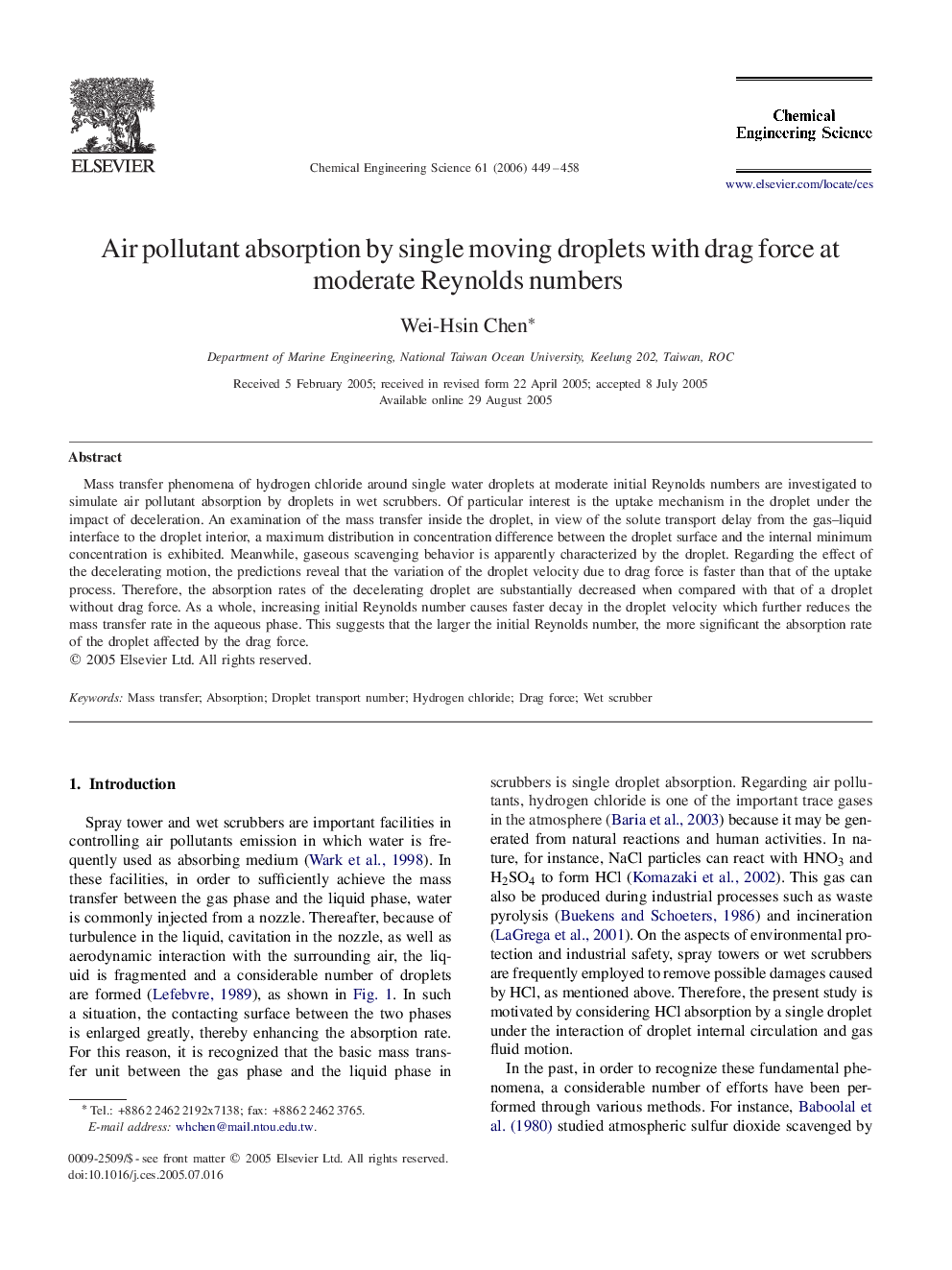| Article ID | Journal | Published Year | Pages | File Type |
|---|---|---|---|---|
| 160047 | Chemical Engineering Science | 2006 | 10 Pages |
Mass transfer phenomena of hydrogen chloride around single water droplets at moderate initial Reynolds numbers are investigated to simulate air pollutant absorption by droplets in wet scrubbers. Of particular interest is the uptake mechanism in the droplet under the impact of deceleration. An examination of the mass transfer inside the droplet, in view of the solute transport delay from the gas–liquid interface to the droplet interior, a maximum distribution in concentration difference between the droplet surface and the internal minimum concentration is exhibited. Meanwhile, gaseous scavenging behavior is apparently characterized by the droplet. Regarding the effect of the decelerating motion, the predictions reveal that the variation of the droplet velocity due to drag force is faster than that of the uptake process. Therefore, the absorption rates of the decelerating droplet are substantially decreased when compared with that of a droplet without drag force. As a whole, increasing initial Reynolds number causes faster decay in the droplet velocity which further reduces the mass transfer rate in the aqueous phase. This suggests that the larger the initial Reynolds number, the more significant the absorption rate of the droplet affected by the drag force.
